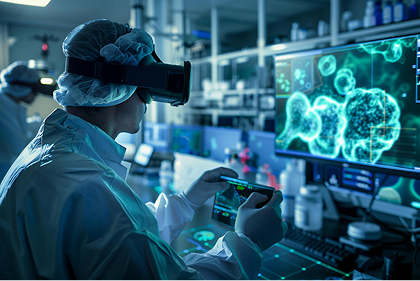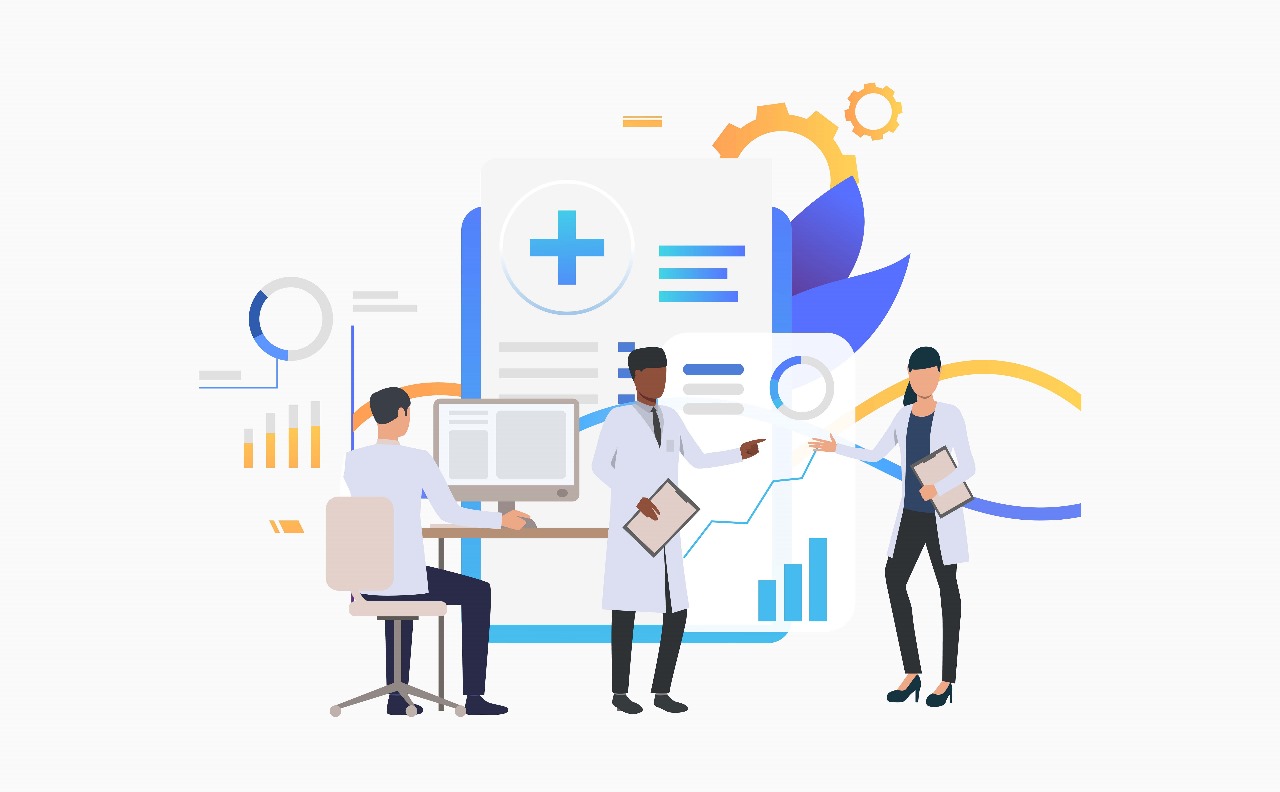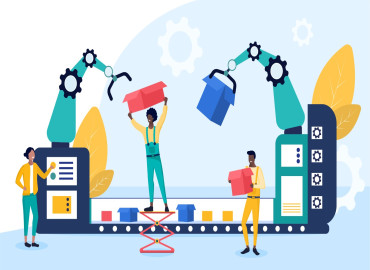by Rakesh Kumar Sinha
6 minutes
Why Digital Twins Are the Future of Pharma Manufacturing
Explore how Digital Twins are revolutionizing pharma—from drug design to clinical trials and manufacturing optimization.

In 1970, as Apollo 13 turned into a crisis, NASA engineers saved the astronauts, not with hardware, but by running real-time simulations on Earth using a digital replica of the spacecraft. This “twin” helped them test and fix problems without touching the actual shuttle. Fast forward to today, and the same concept, Digital Twin technology, is quietly transforming the pharmaceutical industry.
Imagine predicting a batch failure before it even happens, simulating drug responses on virtual patients, or training lab staff without stepping into a cleanroom. Digital Twins are transforming every stage of the pharmaceutical lifecycle: spanning drug discovery, clinical trials, equipment maintenance, and supply chain resilience. They’re not only reshaping Pharma 4.0 but also forming a critical foundation for the advancement of Pharma 5.0.
This blog dives deep into how this novel technology is fueling speed, compliance, and innovation across every layer of pharma. If you think Digital Twins are just for factories, think again; they're your next competitive edge in pharma.
What are Digital Twins?
Digital twins are computer systems that are digital copies of the actual world. In order to make well-informed decisions, it provides real-time information from the physical world, machinery, processes, etc.
Digital twins can be made for a factory, a production line, a testing lab, or simply a single equipment. Real-time information is simulated by dynamic digital twins. The actual physical state of a machine, production line, or entire factory is represented by continuously updated real-time data that is sent into computer models via Internet of Things (IOT) sensors, etc.
Through the use of data analytics, artificial intelligence (AI), and machine learning (ML), digital twins aid in understanding how components interact and produce vast amounts of performance data that can forecast future events, such as equipment failure or product quality. Analysis of performance data also provides multiple opportunities and options for decision-making to correct and improve product performance, process steps or even factory operations.

Key Aspects of Digital Twins:
Virtual Representation:
Digital replica of a physical object, machine, or even an entire production line. In pharma, digital twins replicate everything from a single bioreactor to a full cleanroom suite or packaging line. These virtual models integrate CAD, process control logic, and material flows, helping simulate and validate system behavior before physical changes are made.
Real-time Data:
Reflect the real-time performance using sensors and IoT devices. Real-time inputs from Process Analytical Technology (PAT) sensors (e.g. NIR, Raman spectroscopy), IoT-enabled lab instruments, and Manufacturing Execution System (MES) keep the digital twin updated with current process parameters like temperature, pH, or flow rate, critical for maintaining cGMP compliance.
Simulation and Analysis:
Lead Indicator predicting potential issues before they occur. Digital twins simulate manufacturing scenarios, such as how a slight pH shift affects protein yield, and can predict deviations or batch failures. AI/ML algorithms continuously analyze historical and live data to flag early risks to quality, sterility.
Optimization:
Right First Time & all the time by analyzing data & helping optimize production processes, reduce costs, and improve efficiency. Pharma twins help fine-tune critical process parameters (CPPs) to achieve “right first time” manufacturing. Whether it’s optimizing lyophilization cycles or chromatography steps, twins reduce trial-and-error, saving costly materials and time.
Lifecycle Management:
Very useful - from design and prototyping to production, operation, and maintenance. Digital twins offer traceability from drug design to commercial manufacturing. They’re invaluable during scale-up, technology transfer, and regulatory inspections, enabling virtual validation and rapid troubleshooting during audits or deviation investigations.
Application of Digital Twin In Pharma Manufacturing:
Process Optimization:
Simulating and optimizing production line layouts, material flow, and machine utilization. Pharma companies use digital twins to simulate aseptic workflows, material movement, and operator interactions. This helps design leaner facilities, reduce contamination risks, and optimize material flow in high-stakes environments like sterile fill-finish suites.
Equipment Maintenance:
Twins monitor vibration, pressure, and temperature trends in equipment like centrifuges or HVAC systems to forecast and schedule maintenance before breakdowns. This prevents batch failures and maintains a validated state of equipment. Predicting potential failures and scheduling maintenance proactively, minimizing downtime.
Product Design and Development:
Testing and refining product designs virtually before physical prototyping. In formulation labs, digital twins simulate dissolution profiles, drug release kinetics, and packaging interactions, allowing teams to test and refine formulations virtually before committing to costly physical trials.
Training and Simulation:
Providing virtual training environments for operators and technicians, operators can be trained using virtual models of actual equipment, e.g., isolators, reactors, HPLC units, reducing the learning curve and human error. Digital twins also enable “what-if” scenario drills, improving GMP readiness.
Drug Discovery & Development
In R&D, digital twins can model biological systems, cells, organs, and disease pathways to accelerate target identification and candidate selection. For example, digital replicas of human cells built with genomics data allow virtual screening of billions of compounds, predicting cellular responses without wet-lab experiments. This speeds discovery and helps repurpose existing drugs more efficiently. Twins of molecules or formulations can also predict stability or solubility, reducing lab iterations.
Clinical Trials & Personalized Medicine
Virtual patient twins are emerging as a way to improve clinical trials and tailored therapies. By simulating diverse patient responses using statistical or systems-pharmacology models, companies can predict outcomes and even replace some placebo groups. For instance, Merck’s collaboration with Unlearn.AI used digital twins of patients to accelerate immunology trials while maintaining regulatory rigor. Beyond trials, digital twins of organs, e.g., 3D heart models and patient avatars incorporating genetics/lifestyle, are being developed to personalize dosing and therapies.
Benefits of Digital Twins in Pharma
Reduced Downtime:
Predictive maintenance by identifying potential issues early, minimizing unexpected downtime. Anticipated alerts for pumps, filters, or sterilizers ensure proactive maintenance. In vaccine manufacturing, twins have been used to detect sterility risks before they result in downtime or product loss.
Improved Efficiency & Productivity:
Boosting overall efficiency by optimizing processes and resource allocation. By identifying process bottlenecks and optimizing resource use, e.g., raw material loading, cycle times, twins improve OEE (Overall Equipment Effectiveness) across pharma production lines. Pharma plants with twins see higher throughput and asset utilization. Industry estimates suggest 150–200% productivity gains for pharma firms leveraging digital twins in manufacturing.
Faster Development & Time-to-Market:
By simulating experiments in silico, companies can drastically shorten R&D and scale-up cycles. Clinical trials can be streamlined, reducing or replacing placebo arms with virtual ones, and manufacturing processes are validated virtually before physical trials. In lab operations, McKinsey reports that digitally-enabled QC labs can cut testing costs by up to 25–45% and eliminate ~80% of manual paperwork. These efficiencies speed new drugs to patients.
Consistent Quality:
Real-time feedback and predictive insights ensure products stay within critical quality attributes (CQAs). Virtual testing also ensures processes adhere to FDA/GMP standards before physical runs. For example, continuous monitoring of moisture content during granulation leads to uniform tablet quality.
Cost Savings:
Streamlining activities and preventing failures results in hefty cost savings. Prevention of batch failures, optimization of cleaning processes, and minimization of material waste lead to substantial cost savings, particularly in the manufacturing of high-cost biologics or in a personalized medicine production line.
Informed Decision Making:
Digital twins give evidence-based ideas that can improve decision-making on diverse levels. Digital twins compile cross-functional data across the supply chain, labs, and factory processes to give QA, production, and regulatory teams a single source of truth to make faster and more confident decisions. One bright illustration is seen in the sphere of supply chain: a twin of the chain of logistics can identify the root of a quality problem within the space of a short term, limiting recalls to affected containers.
Conclusion
From mirroring molecular behaviours to simulating entire manufacturing facilities, Digital Twins are no longer science fiction in pharma; they're a strategic necessity. As regulatory demands rise and time-to-market pressures intensify, companies that fail to digitize risk falling behind.
Whether you're optimizing a bioreactor or virtually modelling clinical trials, the digital twin brings precision, foresight, and agility like never before. The pharma world is moving toward intelligent systems that learn, adapt, and improve in real time, and the Digital Twin is at the heart of this transformation.



